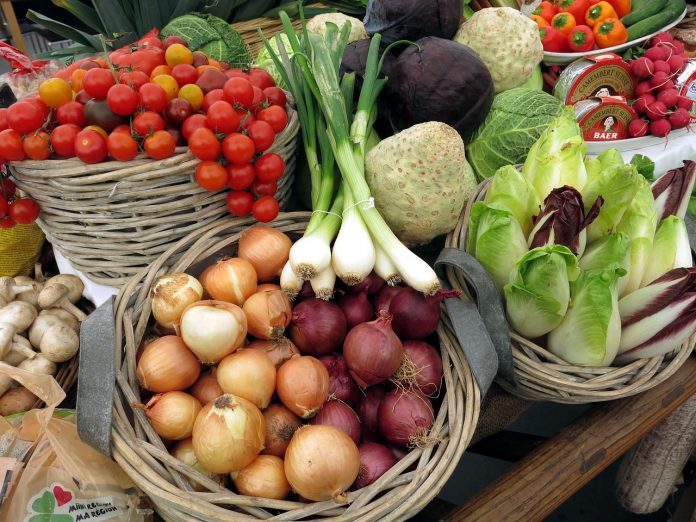After more than a year of pandemic-related changes, some things are starting to look normal again, somewhat. But when it comes to food systems, some hope the pandemic can be a launching pad for new norms.
“We don’t want to go back to normal … that’s not a possibility, and that’s not what we wanted in the first place,” said Michelle Brown, a member of the steering committee for the Ohio Food Policy Network, during a June 11 policy agenda launch for the network.
Instead, she’s hoping the pandemic leads to more sustainable, equitable and resilient food systems.
The network, a volunteer network of people and organizations focused on growing and developing the food system in Ohio, has been building over several years. Now, it has identified several priorities in four areas: local farms, access and education, infrastructure and institutions.
Farms
Priorities for local farms include encouraging farmland transfer to the next generation of farmers, revising building codes to allow farmers to construct high tunnels and hoop houses in all jurisdictions and encouraging sustainable or regenerative farming practices that can support soil health.
“Soil is the foundation for life, for the nutritiousness of our food, for clean water, carbon sequestration and resilience in the face of weather extremes,” said Amalie Lipstreu, member of the steering committee and policy director for Ohio Ecological Food and Farming Association.
Lipstreu referenced Ohio House Bill 95, legislation that would create tax incentives for transferring land to beginning farmers, as one example of policy that could support beginning farmers. She said while the bill has received wide support from the agriculture community and passed out of committee in the House, it hasn’t been brought up for a full House vote yet.
“As Ohio farmers age, we need to ensure we’re doing everything we can to support the transfer to the next generation,” she said.
She also said clarifying building code around high tunnels would ensure that urban farmers can use the tools they need to grow food.
Access
Priorities in access and education include expanding online access for SNAP benefits to small retailers, local farmers, home delivery and farmers markets, and making sure SNAP benefit online sales are accessible for all customers. The network also wants more support for farm to school initiatives and nutrition incentive programming in direct to consumer and retail settings.
Finally, the network wants to establish a statewide nutrition and food system education pilot program, and nutrition standards for pre-K-12 education.
Infrastructure and institutions
Infrastructure is another concern. In 2020, many farmers faced processing challenges as some processors closed due to the pandemic, and many that remained open were backed up with orders.
The network wants to see more support for processing for livestock, aquaculture and specialty crops, including mobile processing, as well as an interagency task force to identify food infrastructure needs and financing options to support that development.
Last year also saw an increase in demand for local food. The network wants to see more work done to encourage institutions to buy local and regional food. This includes increasing reimbursement for schools that buy local food, and changing contracting rules across state government to allow more vendors to buy local.
This would help support and develop markets for local food, steering committee members explained.
Going forward, the network is planning to continue discussing these priorities in its quarterly meetings, and working both within the network and with others outside of the network to achieve them.











